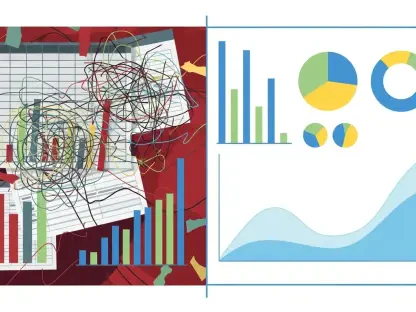The vulnerability of K-12 schools to cyberattacks has become a pressing issue, especially in light of recent data breaches. One such incident involved PowerSchool, a software company serving millions of students worldwide, where hackers stole sensitive information. This breach has highlighted the critical need for improved cybersecurity measures in educational institutions.
The Inherent Vulnerability of K-12 Schools
K-12 schools are particularly susceptible to cyberattacks due to their historically poor funding in cybersecurity infrastructure. David Choffnes, executive director of Northeastern University’s Cybersecurity and Privacy Institute, points out that these institutions lag significantly behind in investments needed to build strong cyber defenses. This underfunding results in outdated systems with well-known security weaknesses that cybercriminals can easily exploit.
Choffnes emphasizes that hackers are aware of the high value of children’s data. Unlike adults, children’s data can be exploited over a longer time frame, making it very attractive for identity theft and other malicious purposes. Parents and school administrations are often more inclined to pay ransoms to prevent the release of sensitive information, thereby making schools enticing targets. He further underlines the enduring impact, explaining that while adults have a limited period in which their data can be exploited, children’s data can be misused for much longer periods since they have their whole lives ahead of them.
The challenge is further compounded by the lack of professional cybersecurity staff in many schools. This shortage leaves schools with inadequate defenses against increasingly sophisticated cyber threats. The existing IT staff, often under-resourced and overburdened, struggle to keep up with the necessary updates and security protocols required to fend off potential breaches. This pervasive underfunding and resource scarcity reflect a systemic issue that cannot be ignored if we hope to secure the digital futures of our children.
Increasing Frequency of Cyberattacks on Schools
The U.S. Department of Education reports that K-12 schools experience about five cybersecurity incidents per week. This alarming trend is corroborated by a 2024 report from the State Educational Technology Directors Association, which highlights that enhancing cybersecurity measures is the top priority for state education tech leaders. However, these leaders widely recognize the inadequacy of state funding to meet the required cybersecurity standards.
Aanjhan Ranganathan, another Northeastern professor and cybersecurity expert, elaborates on the funding constraints and their implications. He highlights that high schools and middle schools often struggle with inadequate funding, making it difficult to allocate resources for robust cybersecurity measures. Consequently, their systems are outdated and host numerous security vulnerabilities, providing an easy entry point for cyber attackers. The outdated systems exacerbate the risk, with many using legacy software no longer supported or updated by vendors.
Despite recognizing the risks, schools often have to prioritize immediate educational needs over long-term cybersecurity investments due to tight budgets. This reactive approach leaves them playing catch-up with cyberattackers who continually devise new methods to infiltrate systems. Additionally, schools tend to focus more on physical security measures over cybersecurity, leaving a critical gap that attackers are more than willing to exploit. The disparity between the frequency of attacks and the resources dedicated to cybersecurity highlights an urgent need for action to bridge this security gap.
Response to the PowerSchool Data Breach
In response to the PowerSchool data breach, the company has collaborated with Crowdstrike, a cybersecurity firm, and the FBI to investigate the incident. Additionally, PowerSchool has taken actions including instructing customers to change passwords and monitoring the dark web for any leaked information. The company is also offering credit monitoring services to impacted individuals as a precaution.
Interestingly, PowerSchool confirmed that it paid a ransom to the hackers, with the belief that a video showing the data deletion serves as proof. However, Ranganathan and Choffnes both warn against trusting such evidence, pointing out that deleted data on devices can often be easily recovered and that paying ransoms can encourage further cyberattacks as attackers expect monetary rewards for their exploits. They argue that paying ransoms sets a dangerous precedent, signaling to cybercriminals that educational institutions are willing to pay for the return of stolen information, thereby increasing the likelihood of future attacks.
The incident with PowerSchool has served as a wake-up call for schools and cybersecurity professionals alike, prompting a reassessment of current security measures and protocols. Numerous school districts are re-evaluating their cybersecurity strategies and considering more robust solutions to protect against similar breaches. This includes exploring partnerships with cybersecurity firms, engaging in regular training for staff, and implementing multi-factor authentication to better safeguard sensitive data.
Methods of Cyberattacks on Schools
Hackers often use email phishing attacks to access unauthorized login data. These phishing schemes are deceptively simple yet highly effective, tricking users into revealing their credentials through seemingly legitimate emails and websites. Ranganathan adds that hackers frequently target children on gaming platforms like Discord, where they can manipulate them into sharing credentials, making children an unsuspecting gateway to school systems. Hackers are skilled in using social engineering tactics to trick individuals into revealing sensitive information, exploiting both the innocence and curiosity of children.
Phishing is not the only method employed by cybercriminals. Other techniques include malware, ransomware attacks, and exploiting unpatched software vulnerabilities. Schools, with their limited IT resources, often find it challenging to keep up with the necessary patches and updates, providing a wider attack surface for hackers. Cyberattackers continuously adapt their methods, making it imperative for schools to stay vigilant and informed about the latest threats. Another common method involves leveraging brute force attacks to crack weak passwords or using stolen credentials available on the dark web to gain access to systems.
The lack of funding for cybersecurity infrastructure in K-12 schools makes them prime targets for cyberattacks. The increasing frequency of these attacks emphasizes the urgent need for investment in cybersecurity defenses. Moreover, the data breaches expose sensitive information of children, posing long-term risks. As such, it’s not only about implementing cybersecurity measures but also about educating students, teachers, and parents about potential threats and how to recognize them. Regular awareness campaigns and training sessions can significantly enhance the overall security posture of schools.
The Path Forward: Investment and Proactive Measures
The susceptibility of K-12 schools to cyberattacks has emerged as a critical concern, particularly following a series of recent data breaches. A notable example is the hack involving PowerSchool, a leading software provider that serves millions of students across the globe. In this instance, cybercriminals managed to obtain sensitive information, underscoring the significant cybersecurity vulnerabilities within our educational systems.
With the increasing reliance on digital platforms for administration, communication, and learning, schools are becoming prime targets for cyber threats. These breaches jeopardize not only the personal information of students and staff but also the integrity of educational operations.
Educational institutions must prioritize the enhancement of their cybersecurity protocols. This includes investing in robust security infrastructure, conducting regular security audits, and educating staff and students on safe digital practices. Collaboration with cybersecurity experts can also bolster defense mechanisms, ensuring that sensitive information is well-protected. As the digital landscape evolves, so must the strategies schools employ to safeguard against cyber threats.









